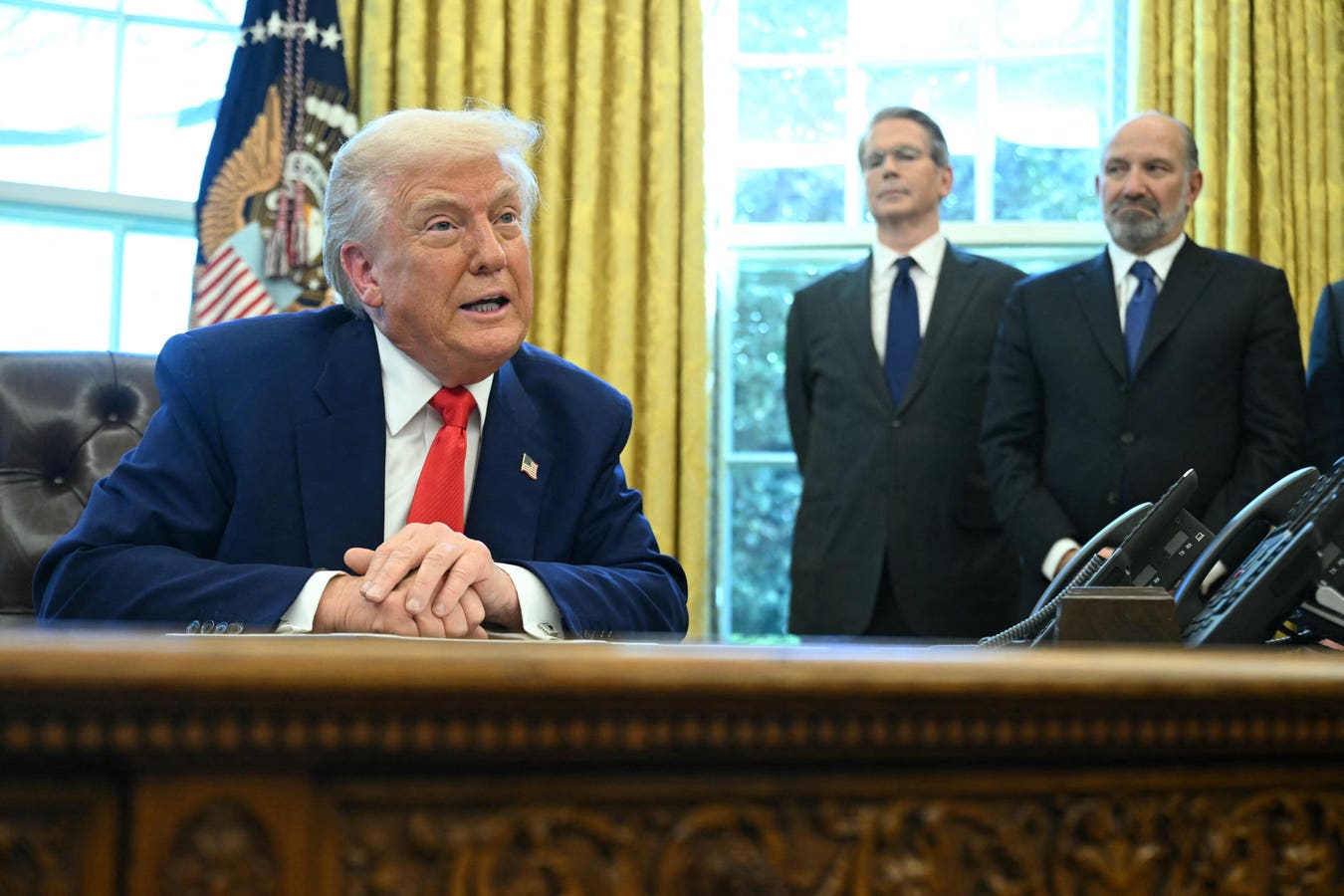Topline
Exactly 35 years ago this week, the Hubble Space Telescope was released from the Space Shuttle Discovery cargo hatch. After a stuttering start, it became one of humankind’s most treasured inventions, sending back images after jaw-dropping images and revealing the universe as it really is. To celebrate its 35th anniversary, NASA has published four spectacular new images.
In celebration of the 35th anniversary of the Hubble Space Telescope’s launch into orbit, … More astronomers aimed the legendary telescope at a selection of photogenic space targets, stretching from inside our solar system to the nebulae found in interstellar space, to far-flung galaxies.
Key Facts
The four new images published this week to celebrate its birthday are of Mars, planetary nebula NGC 2899, the Rosette Nebula and barred spiral galaxy NGC 5335. All images use the latest image processing techniques that weren’t available when the data was originally collected.
According to NASA, Hubble has made more than 1.7 million observations of about 55,000 celestial objects, creating more than 400 terabytes of data. Its observations have been used by scientists to write over 22,000 scientific papers.
The four new images follow a steady stream of newly processed Hubble images published last week, including new versions of Hubble classics NGC 346, the Sombrero Galaxy and the iconic Eagle Nebula.
Planetary nebula NGC 2899, one of the Hubble Space Telescope’s 35th Anniversary images.
Window On The Universe
“Hubble opened a new window to the universe when it launched 35 years ago,” said Shawn Domagal-Goldman, acting director of the Astrophysics Division at NASA Headquarters in Washington, in a press statement. “Its stunning imagery inspired people across the globe, and the data behind those images revealed surprises about everything from early galaxies to planets in our own solar system.”
NASA’s Hubble Space Telescope captured in exquisite detail galaxy NGC 5335 for one of its 35th … More Anniversary images.
Tech Issues Then And Now
It wasn’t a great start for Hubble. Its first images were blurry — a result of an unexpected flaw in its eight-foot diameter primary mirror — which was fixed in 1993 by NASA astronauts. Further servicing missions followed until 2009.
That final servicing mission left it with six gyroscopes — the tech that allows it to accurately point at objects — but a series of glitches last year left it with just one working gyro. It’s now slower and less flexible than before (it can no longer study Venus, for example, or the moon) — but, for now, it’s still usable.
Dark clouds in the Rosette Nebula, one of the Hubble Space Telescope’s 35th Anniversary images. It’s … More 100 light-years across and located 5,200 light-years from the sun.
Background: Hubble’s Successors
Hubble was designed to last for 15 years. “The fact that it is still operating today is a testament to the value of our flagship observatories and provides critical lessons for the Habitable Worlds Observatory, which we plan to be serviceable in the spirit of Hubble,” said Domagal-Goldman.
There are plans for a successor — the Habitable Worlds Observatory — a large ultraviolet, optical and infrared space telescope to replace Hubble and the James Webb Space Telescope. It will be designed to seek out signs of life beyond our solar system — identifying and examining Earth-like planets orbiting other stars to determine if they could show signs of hosting life — as well as be a general purpose observatory with unprecedented sensitivity and resolution.
HWO will be NASA’s next flagship astrophysics mission after the $3.5-billion Nancy Grace Roman Space Telescope, scheduled to launch by May 2027, though NASA said yesterday it wants it to launch as early as October 2026.
Further Reading
ForbesHalley’s Comet Meteor Shower Starts This Weekend — Here’s When To WatchBy Jamie CarterForbesWhy This Rare ‘Einstein Ring’ Image Isn’t What You ThinkBy Jamie CarterForbesNorthern Lights: Earth-Facing ‘Hole In The Sun’ Could Trigger Auroras This WeekBy Jamie Carter












